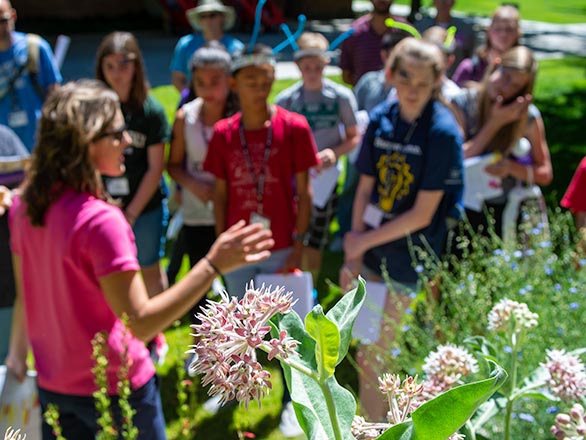About the garden
 The Biggest Little Pollinator Garden is located on the campus of the University of Nevada, Reno, near the Fleischmann Agriculture Building. The garden is collaboratively maintained by the U.S. Fish and Wildlife; Nevada Divison of Forestry; Nevada Native Plants Society; Pollinator Partnership; Xerces Society; University Arboretum Board; Nevada State Arboretum Board; University Facilities; University Museum of Natural History; Nevada Bugs and Butterflies; College of Science; and College of Agriculture, Biotechnology & Natural Resources faculty, staff, students and volunteers.
The Biggest Little Pollinator Garden is located on the campus of the University of Nevada, Reno, near the Fleischmann Agriculture Building. The garden is collaboratively maintained by the U.S. Fish and Wildlife; Nevada Divison of Forestry; Nevada Native Plants Society; Pollinator Partnership; Xerces Society; University Arboretum Board; Nevada State Arboretum Board; University Facilities; University Museum of Natural History; Nevada Bugs and Butterflies; College of Science; and College of Agriculture, Biotechnology & Natural Resources faculty, staff, students and volunteers.
In 2015, the garden's beginning breathed new life into an otherwise dully landscaped portion of the University's beautiful campus. Since it has provided a habitat for wildlife and educational opportunities for students, faculty, staff, and the community. For example, school children who visit the University's Natural History Museum get to see the garden, a place to develop a sense of wonder, stewardship and care for the environment.
In 2017, The Reno/Sparks Association of REALTORS selected the garden for the year's REALTORS Build A Better Block project. Funds from the project helped the garden to better be a place that showcases the diversity of native plants and pollinators.
Now, the garden is a very diverse and flourishing area featuring many different species of plants. Most of them are native to either the Great Basin or the Mojave Desert. The plants give gorgeous blooms that help pollinators like butterflies, moths, solitary bees, bumble bees, flower flies, beetles, hummingbirds and more. One part of the garden to be particularly excited about is its butterfly habitat. There, two species of native milkweed grow. Without it, monarch caterpillars don't have food.
Without pollinators, we wouldn't have food either! This is because about one out of every three bites of food we eat, including of almonds, squash, blueberries and chocolate, depends on pollinators. The garden is home to great celebrations of this during National Pollinator Week. At this time, the garden's partners come together for a festival. It features talks, tours, native bee and butterfly specimens, a native bee house-making activity, educational crafts, free plants and seeds, and more!


